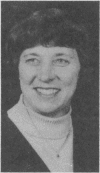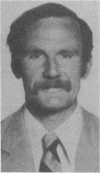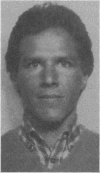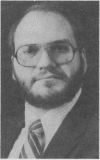Abstract
Twenty-four collegiate distance runners and 20 power athletes (sprinters and jumpers) of various success levels were tested on a number of physiological and psychological parameters. Multiple regression analysis indicated that physiological factors could explain over 81% of the variance related to successful distance running while physiological and psychological factors could explain over 80% of the of the variance related to successful sprinting and jumping. Body weight, fibre type, low density lipoprotein-cholesterol, and hamstring strength were significant singular correlates to successful distance running. Year in school, percent body fat, quadriceps strength, and leg muscle balance were significant single correlates to successful sprinting and jumping performance.
Full text
PDF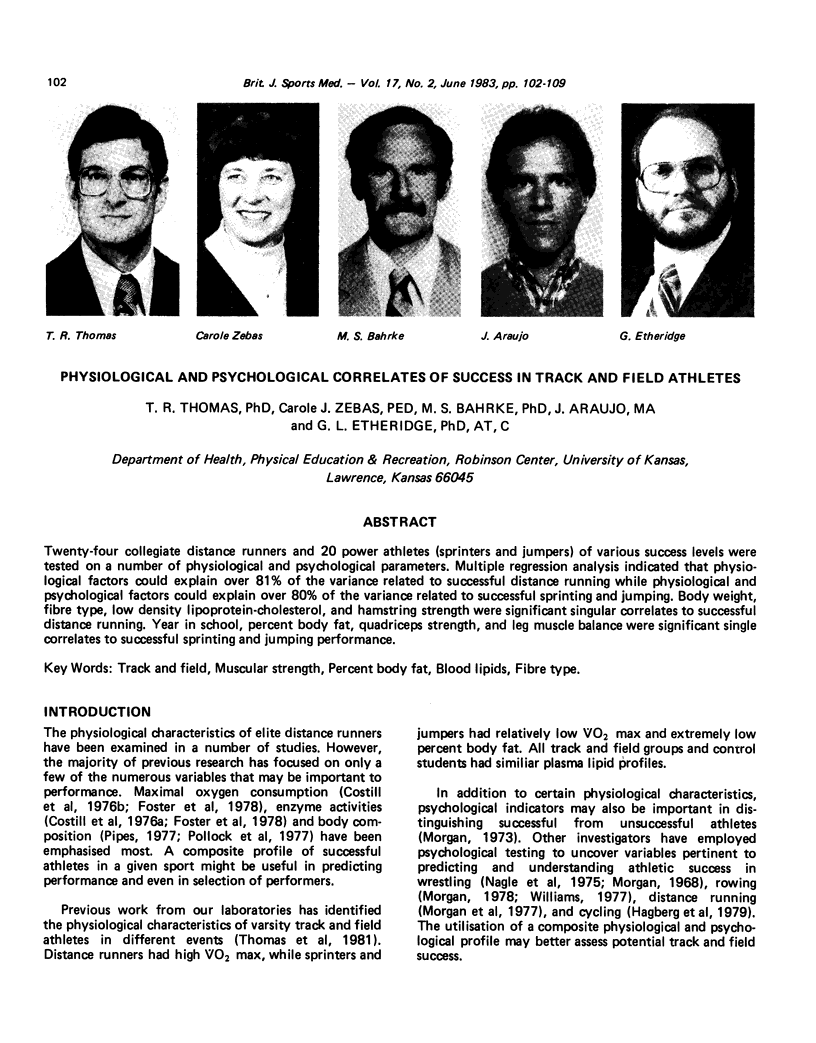

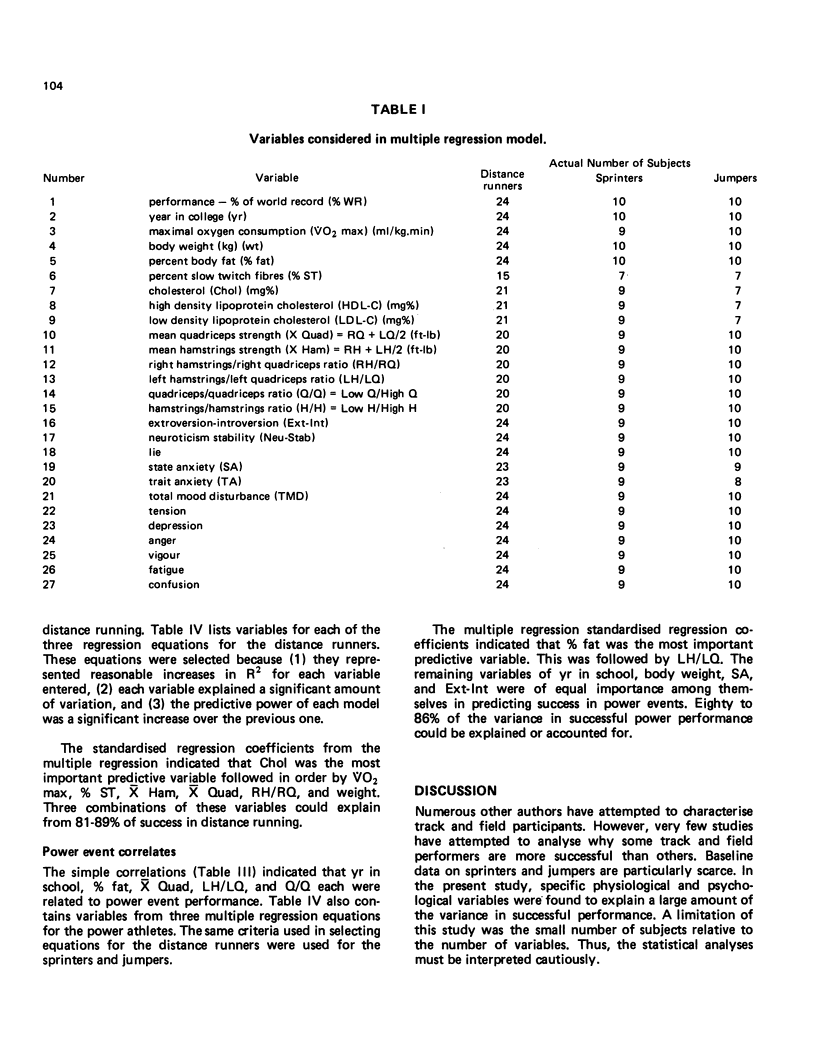


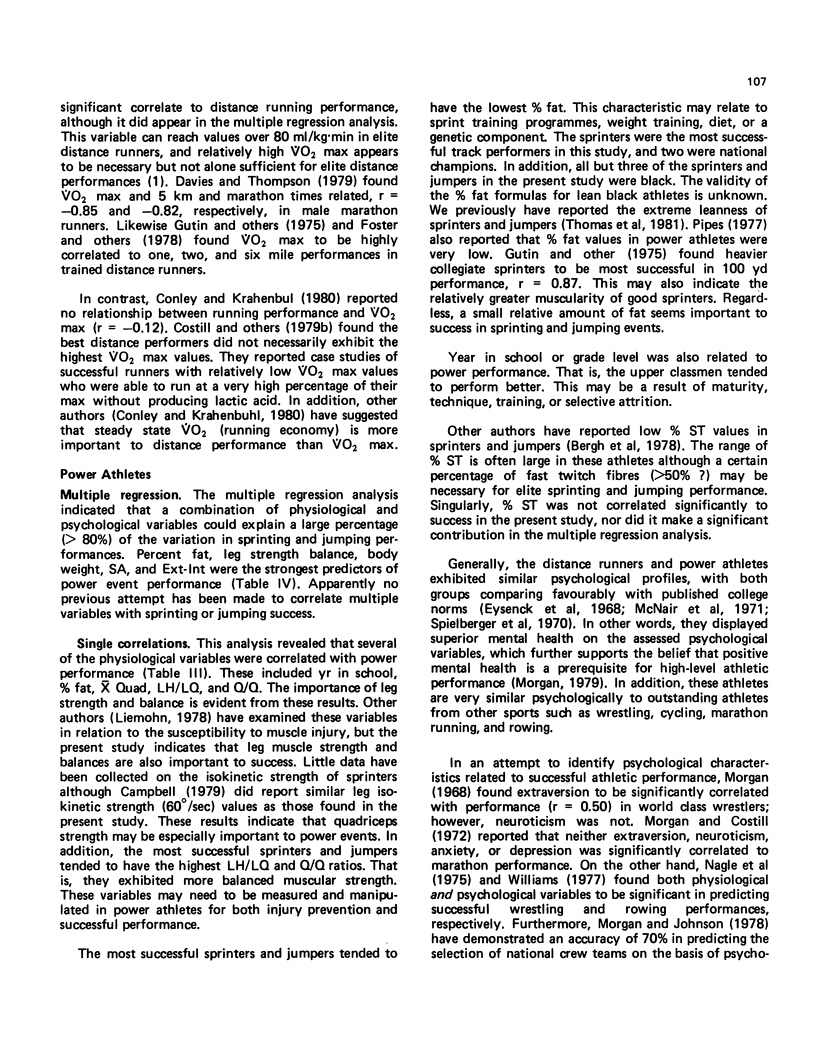
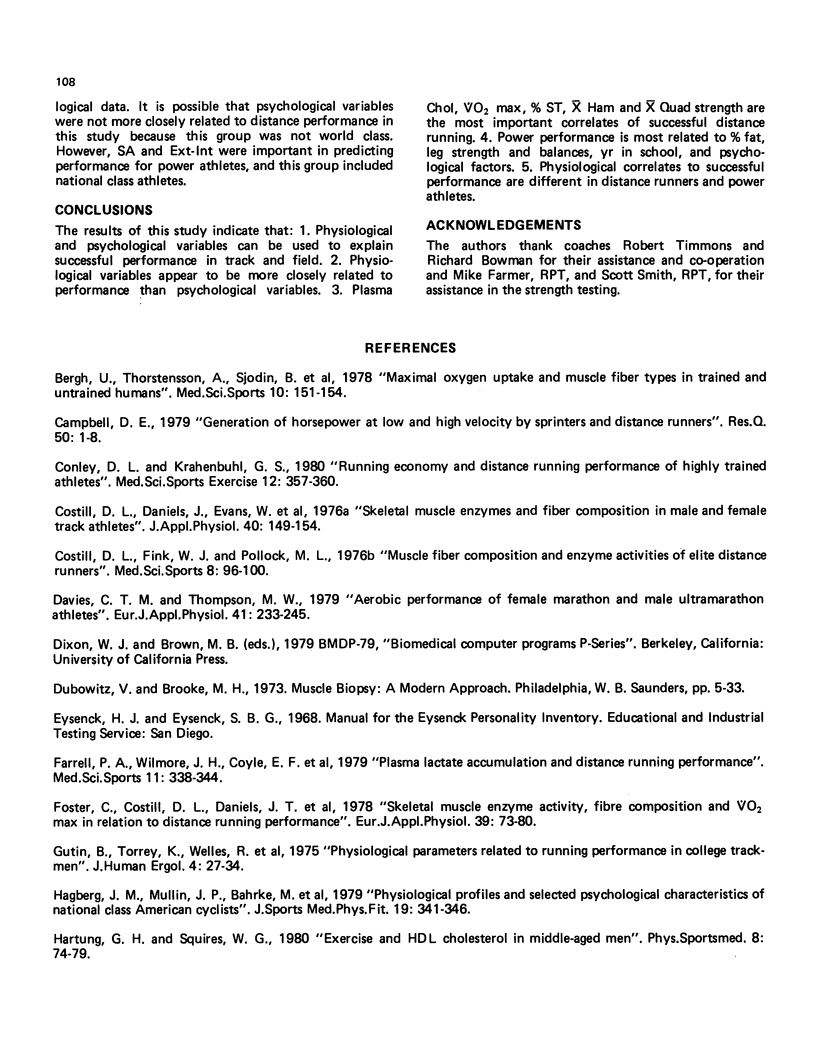
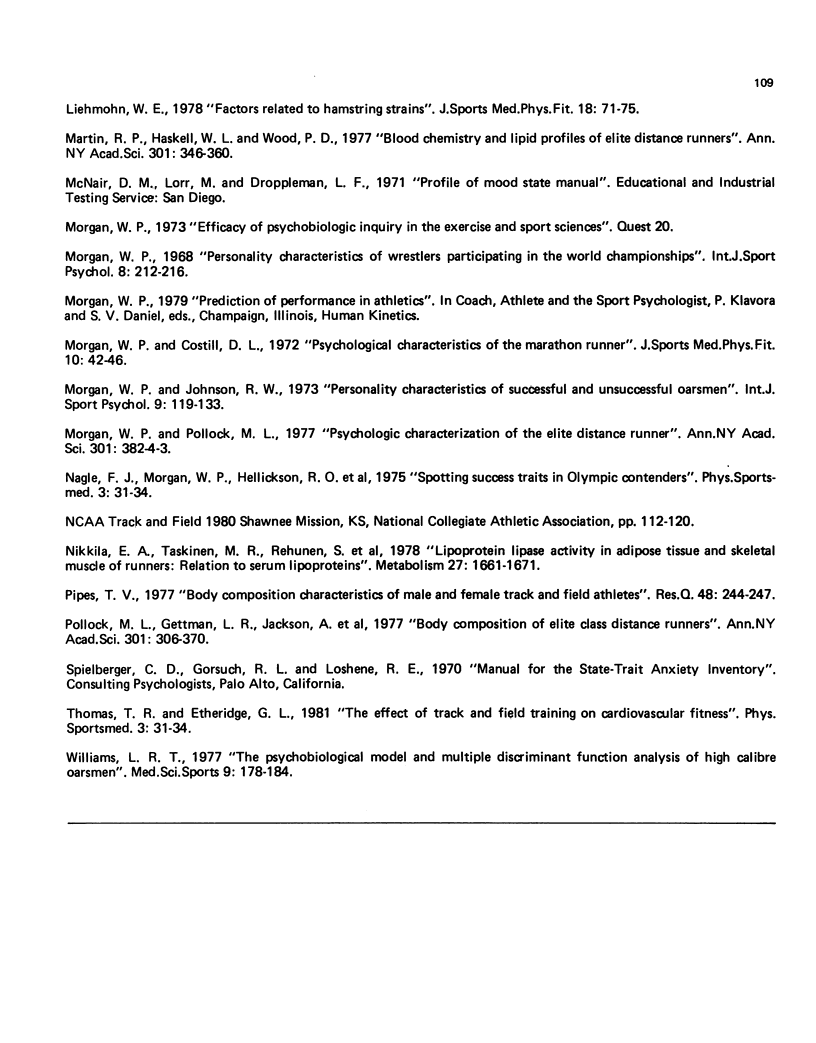
Images in this article
Selected References
These references are in PubMed. This may not be the complete list of references from this article.
- Bergh U., Thorstensson A., Sjödin B., Hulten B., Piehl K., Karlsson J. Maximal oxygen uptake and muscle fiber types in trained and untrained humans. Med Sci Sports. 1978 Fall;10(3):151–154. [PubMed] [Google Scholar]
- Conley D. L., Krahenbuhl G. S. Running economy and distance running performance of highly trained athletes. Med Sci Sports Exerc. 1980;12(5):357–360. [PubMed] [Google Scholar]
- Costill D. L., Daniels J., Evans W., Fink W., Krahenbuhl G., Saltin B. Skeletal muscle enzymes and fiber composition in male and female track athletes. J Appl Physiol. 1976 Feb;40(2):149–154. doi: 10.1152/jappl.1976.40.2.149. [DOI] [PubMed] [Google Scholar]
- Costill D. L., Fink W. J., Pollock M. L. Muscle fiber composition and enzyme activities of elite distance runners. Med Sci Sports. 1976 Summer;8(2):96–100. [PubMed] [Google Scholar]
- Davies C. T., Thompson M. W. Aerobic performance of female marathon and male ultramarathon athletes. Eur J Appl Physiol Occup Physiol. 1979 Aug;41(4):233–245. doi: 10.1007/BF00429740. [DOI] [PubMed] [Google Scholar]
- Farrell P. A., Wilmore J. H., Coyle E. F., Billing J. E., Costill D. L. Plasma lactate accumulation and distance running performance. Med Sci Sports. 1979 Winter;11(4):338–344. [PubMed] [Google Scholar]
- Foster C., Costill D. L., Daniels J. T., Fink W. J. Skeletal muscle enzyme activity, fiber composition and VO2 max in relation to distance running performance. Eur J Appl Physiol Occup Physiol. 1978 Aug 15;39(2):73–80. doi: 10.1007/BF00421711. [DOI] [PubMed] [Google Scholar]
- Gutin B., Torrey K., Welles R., Vytvytsky M. Physiological parameters related to running performance in college trackmen. J Hum Ergol (Tokyo) 1975 Sep;4(1):27–34. [PubMed] [Google Scholar]
- Hagberg J. M., Mullin J. P., Bahrke M., Limburg J. Physiological profiles and selected psychological characteristics of national class American cyclists. J Sports Med Phys Fitness. 1979 Dec;19(4):341–346. [PubMed] [Google Scholar]
- Martin R. P., Haskell W. L., Wood P. D. Blood chemistry and lipid profiles of elite distance runners. Ann N Y Acad Sci. 1977;301:346–360. doi: 10.1111/j.1749-6632.1977.tb38212.x. [DOI] [PubMed] [Google Scholar]
- Morgan W. P., Costill D. L. Psychological characteristics of the marathon runner. J Sports Med Phys Fitness. 1972 Mar;12(1):42–46. [PubMed] [Google Scholar]
- Morgan W. P. Personality characteristics of wrestlers participating in the world championships. J Sports Med Phys Fitness. 1968 Dec;8(4):212–216. [PubMed] [Google Scholar]
- Morgan W. P., Pollock M. L. Psychologic characterization of the elite distance runner. Ann N Y Acad Sci. 1977;301:382–403. doi: 10.1111/j.1749-6632.1977.tb38215.x. [DOI] [PubMed] [Google Scholar]
- Nikkilä E. A., Taskinen M. R., Rehunen S., Härkönen M. Lipoprotein lipase activity in adipose tissue and skeletal muscle of runners: relation to serum lipoproteins. Metabolism. 1978 Nov;27(11):1661–1667. doi: 10.1016/0026-0495(78)90288-3. [DOI] [PubMed] [Google Scholar]
- Pipes T. V. Body composition characteristics of male and female track and field athletes. Res Q. 1977 Mar;48(1):244–247. doi: 10.1080/10671315.1977.10762181. [DOI] [PubMed] [Google Scholar]
- Pollock M. L., Gettman L. R., Jackson A., Ayres J., Ward A., Linnerud A. C. Body composition of elite class distance runners. Ann N Y Acad Sci. 1977;301:361–370. doi: 10.1111/j.1749-6632.1977.tb38213.x. [DOI] [PubMed] [Google Scholar]
- Williams L. R. The psychobiological model and multiple discriminant function analysis of high-calibre oarsmen. Med Sci Sports. 1977 Fall;9(3):178–184. [PubMed] [Google Scholar]




